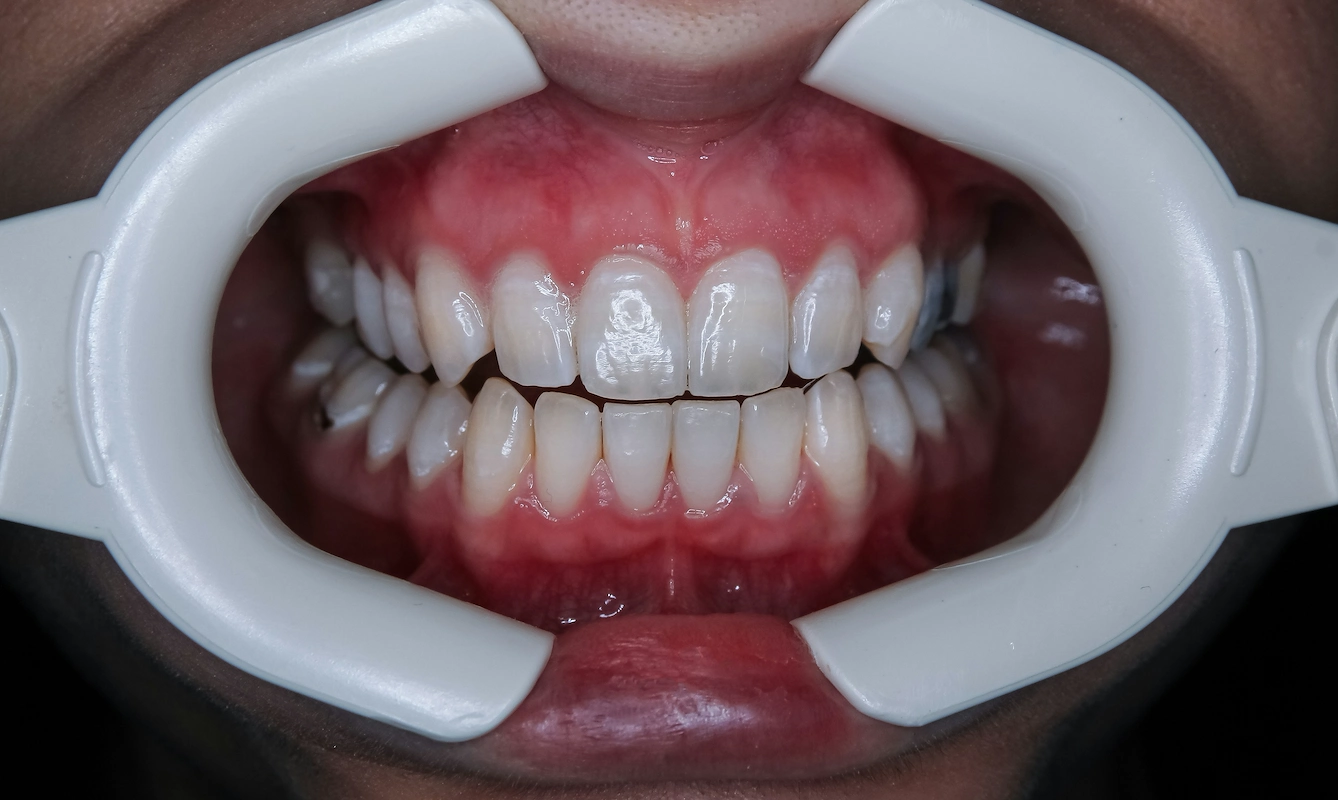Starting a teeth whitening business is a rewarding venture that combines an eye for detail and strong customer service skills with business savvy. The industry is a multi-billion dollar market, fueled by a steady demand for brighter smiles from people of all walks of life, including young professionals, brides-to-be, and those preparing for special events.
This guide will take you through the practical steps of validating your business concept, obtaining the right licenses, acquiring equipment, and building supplier relationships to help you launch a successful teeth whitening business in the U.S.
Step 1: Create your business plan and validate the market
Before you spend a dollar, understand your local market. Use the U.S. Census Bureau website to check demographics in your target zip codes. Look for populations with disposable income, such as professionals aged 25-45, and areas with a high number of wedding venues or corporate offices.
Analyze your local competition
Next, map out who you are up against. A simple search on Google Maps for "teeth whitening" will reveal nearby salons, spas, and dental offices. Note their pricing, services, and customer reviews. Many new owners forget to check dentists, who are often their strongest competitors.
Estimate your startup costs
Your initial investment will likely fall between $2,000 and $7,000. This covers key areas. Budget for professional training and certification, which can cost from $500 to $2,000. A quality LED lamp and client chair might run you $700 to $2,500 combined.
You should also set aside funds for initial supply kits ($400-$1,000), business licensing ($100-$500), and liability insurance. A frequent misstep is buying cheap gels to cut costs, which often leads to poor results and unhappy clients. Invest in quality from the start.
Here are 3 immediate steps to take:
- Research the demographics of three potential neighborhoods using the U.S. Census Bureau website.
- List five local competitors from Google Maps and document their prices and services.
- Create a detailed startup budget based on the cost ranges for equipment, training, and supplies.
Step 2: Establish your legal structure and get licensed
Choose your business structure
You might consider forming a Limited Liability Company (LLC). It separates your personal assets from business debts. Filing costs between $50 and $500, depending on your state, and you can file directly on your Secretary of State’s website.
A sole proprietorship is simpler but offers no liability protection, putting your personal finances at risk if the business is sued. For peace of mind, the LLC is a better choice for most new owners.
Navigate industry regulations and licensing
Teeth whitening rules vary dramatically by state. Your first stop should be your state's Board of Dentistry or Cosmetology website. Some states restrict this service to dental professionals, and operating without the right credentials can lead to significant fines.
Once you confirm you can operate, get a free Employer Identification Number (EIN) from the IRS website. You will also need a general business license from your city or county, which typically costs $50 to $100.
Finally, secure professional liability insurance. This protects your new business from claims of accidental injury or unsatisfactory results. Expect to pay around $300 to $600 annually for a solid policy.
Here are 4 immediate steps to take:
- Check your state’s Board of Dentistry website for its official stance on teeth whitening services.
- File your LLC formation documents with your state’s Secretary of State.
- Apply for a free EIN directly on the IRS website.
- Request a quote for professional liability insurance from an agent who covers beauty services.
Step 3: Secure your insurance and manage risk
You will want to secure a few key policies. Professional liability is non-negotiable, as it covers claims of unsatisfactory results or accidental injury like gum irritation. A policy with $1 million in coverage is standard. General liability covers incidents like a client who trips and falls.
If you lease a commercial space, you will also need property insurance. Once you hire employees, you must add workers’ compensation. These policies can often be bundled, with annual premiums from $500 to $1,200. A common mistake is to underinsure to save money, which exposes your business to risk.
Look for providers who specialize in the beauty industry. Companies like Hiscox, Beauty & Bodywork Insurance (BBI), and NEXT Insurance understand your specific needs. Your client intake form is also a key part of risk management. It should ask about dental history, allergies, and sensitivities before you begin any treatment.
Here are 4 immediate steps to take:
- Request quotes for professional and general liability insurance.
- Compare policies from beauty industry specialists like Hiscox or BBI.
- Create a client intake form with questions on allergies and dental history.
- Budget for workers’ compensation if you plan to hire staff.
Step 4: Secure your space and purchase equipment
You do not need a large space. A 100-200 square foot room is often enough. Look for salon suites or small commercial spaces zoned for "personal services". You can confirm the zoning classification on your local city planning department’s website before you sign anything.
When you negotiate a lease, you might want to ask for a shorter term, like one or two years. This gives you flexibility. Also, inquire about a tenant improvement allowance. This could help cover costs for paint or new flooring.
Key equipment and supplies
Your main purchases will be a professional LED lamp ($400-$1,500) and a comfortable client chair ($300-$1,000). Many new owners are tempted by low-cost lamps from unknown sellers, but these often produce uneven results. Stick to reputable suppliers with positive reviews.
For whitening gels and supplies, look at industry suppliers like WSD Labs USA or Beaming White. Most offer starter kits that cost between $400 and $1,000. These kits let you start without a large upfront inventory commitment.
Here are 4 immediate steps to take:
- Check the zoning regulations for "personal services" in your desired neighborhood.
- Price out LED lamps and client chairs from two reputable suppliers.
- Request starter kit information from a supplier like WSD Labs USA.
- Prepare questions for potential landlords about lease terms and improvement allowances.
Step 5: Set up your payment processing
Most clients will pay per session. You can also offer packages, like three sessions for a discounted price. For group bookings, such as for a bridal party, it is a good idea to require a deposit upfront to secure the appointment.
When you choose a payment processor, look for low transaction fees and simplicity. Many new owners do not realize that processors can charge close to 3% per sale plus monthly fees. These costs add up and reduce your profit on every client.
For teeth whitening businesses that need to accept payments on-site or on-the-go, JIM offers a streamlined solution. With JIM, you can accept debit, credit and digital wallets directly through your smartphone - just tap and done.
At just 1.99% per transaction with no hidden costs or extra hardware needed, it's particularly useful for mobile services or small salon suites. This rate is much lower than the average commission rates other payment solution providers offer.
- Get Started: Download the JIM app for iOS.
- Make a Sale: Type the sales amount, hit sell, and ask your customer to tap their card or device on your phone.
- Access Funds: Your money is available right on your JIM card as soon as the sale is done - no waiting for bank transfers.
Here are 3 immediate steps to take:
- Decide on your pricing for single sessions and package deals.
- Download the JIM app to review its features and interface.
- Calculate your potential savings on transaction fees with a 1.99% rate versus a higher 3% rate.
Step 6: Fund your business and manage finances
Secure your startup funding
Most owners self-fund with personal savings. If you need a loan, the SBA Microloan program is a solid choice. It offers loans from $500 to $50,000. Lenders typically look for a credit score above 640, and interest rates often fall between 8% and 13%.
Some new owners get approved for a loan and borrow more than they need. It is better to only take what you need for startup costs. This keeps your monthly payments low while you build your client base. Grants are rare, but you can search on Grants.gov.
Manage your day-to-day cash flow
You will want enough working capital to cover your first six months. A buffer of $3,000 to $5,000 is a safe target. This pays for rent, insurance, and marketing before you have consistent income. Also, open a dedicated business bank account immediately to avoid mixing personal and business funds.
Here are 4 immediate steps to take:
- Calculate your total startup costs plus six months of operating expenses.
- Check your personal credit score to see if you qualify for small business loans.
- Research the SBA Microloan program and find a local intermediary lender.
- Open a separate business bank account to keep your finances clean.
Step 7: Hire your team and set up operations
Your first hire will likely be a Teeth Whitening Technician. This person handles client consultations, performs the whitening procedure, and maintains equipment sanitation. Expect to pay between $20 and $35 per hour, plus tips, based on your location and their experience level.
Set up your daily operations
Before you post a job, re-verify your state’s rules on the Board of Dentistry website. Some states mandate that technicians hold a dental assistant or hygienist license. Many new owners make the mistake of hiring without this check, which can lead to fines.
To manage your schedule, you can use a platform like Acuity Scheduling or Square Appointments. These systems allow clients to book online and receive automatic reminders, which helps reduce no-shows. Most offer free plans for single users.
A single technician can typically service six to eight clients per day. A good benchmark is to have your own schedule consistently 70% booked before you bring on a part-time employee. This ensures you have enough client flow to support their wages.
Here are 4 immediate steps to take:
- Confirm your state’s specific licensing requirements for any new hires.
- Draft a job description for a Teeth Whitening Technician with a clear pay range.
- Sign up for a free trial of a scheduling platform like Acuity Scheduling.
- Calculate the number of weekly clients required to cover a part-time salary.
Step 8: Market your business and get clients
Build local partnerships
Your first clients will likely come from local connections. You could connect with wedding planners, photographers, and event venues. Offer them a small commission, like 10-15%, for each client they refer. This creates a direct pipeline of customers with upcoming events.
Use social media visually
Instagram and Facebook are perfect for showcasing results. Post high-quality before-and-after photos, with your client’s permission. Use local hashtags like #[YourCity]TeethWhitening to attract nearby customers. A consistent posting schedule, perhaps three times a week, keeps your business visible.
A frequent misstep is to spend heavily on broad digital ads. It is often better to focus your budget on hyper-local targeting. You can run Facebook ads that only show to people within a 10-mile radius of your business who have an interest in beauty services.
Track your marketing efforts
Ask every new client, "How did you hear about us?" and log the answers. This helps you see which channels work. A good customer acquisition cost (CAC) to aim for in the beauty industry is between $50 and $100. If you spend more, you may need to adjust your strategy.
Here are 4 immediate steps to take:
- List three local businesses, like wedding planners or salons, to propose a referral partnership.
- Set up a business Instagram account and plan your first five posts.
- Create a simple intake question to track how new clients discover you.
- Draft a sample Facebook ad targeted to your specific local area.
Step 9: Set your pricing and profit margins
Define your service menu and prices
A standard 60-minute session typically costs between $150 and $300. You might also offer a package of three sessions for a discounted rate, like $450, to encourage repeat business. For groups like bridal parties, consider a per-person rate with a non-refundable deposit.
Your supply cost per client should be around $20 to $40. This means a $200 service can yield a gross profit of $160 or more. This high margin gives you room for marketing and other expenses without feeling squeezed.
To set your final price, check what local competitors charge. Look at their websites and search for deals on platforms like Groupon. This shows you the price range customers in your area expect to pay. Many new owners make the mistake of trying to be the cheapest option.
Instead, you should price based on the quality of your service and the results you deliver. Clients will pay more for a professional experience and a visibly brighter smile. Your value is not just in the gel, but in your expertise and the client's comfort.
Here are 4 immediate steps to take:
- Set a price for a standard 60-minute whitening session.
- Create a discounted price for a three-session package.
- Research the pricing of five local competitors, including dentists and salons.
- Calculate your profit margin per session based on a $30 supply cost.
Step 10: Maintain quality and scale your business
To ensure consistent results, use a professional teeth shade guide to measure every client's progress. Aim for an improvement of at least three to five shades per session. You should also track client reviews on Google and Yelp, with a goal to maintain a 4.8-star average or higher.
Some owners get caught up in daily appointments and forget to track these metrics. This can lead to inconsistent service quality, which hurts your reputation. A happy client who sees measurable results is your best form of marketing, so make quality control a weekly habit.
When to expand your operations
Once your own schedule is consistently 80% booked for three consecutive months, it is time to consider hiring a part-time technician. This ensures you have enough client demand to support the additional payroll expense without straining your cash flow.
As you add staff, your scheduling software becomes even more important. Platforms like Acuity Scheduling or Square Appointments have features to manage multiple calendars. This lets you oversee your team's bookings and avoid double-booking clients as your business grows.
Here are 4 immediate steps to take:
- Purchase a professional teeth shade guide to track client results.
- Set a quality benchmark, such as achieving a 4.8-star average online review score.
- Establish a hiring trigger, like being 80% booked for three straight months.
- Review the multi-staff features on a scheduling platform like Acuity or Square.
You have the steps to launch your teeth whitening business. Remember, clients are buying confidence, not just a service. Focus on a professional experience and visible results, and your reputation will grow naturally. You have a clear path, so take that first step.
As you get set up, make payments simple. JIM turns your phone into a card reader, so you can accept payments anywhere for a flat 1.99% fee with no extra hardware. Download JIM to get started.















